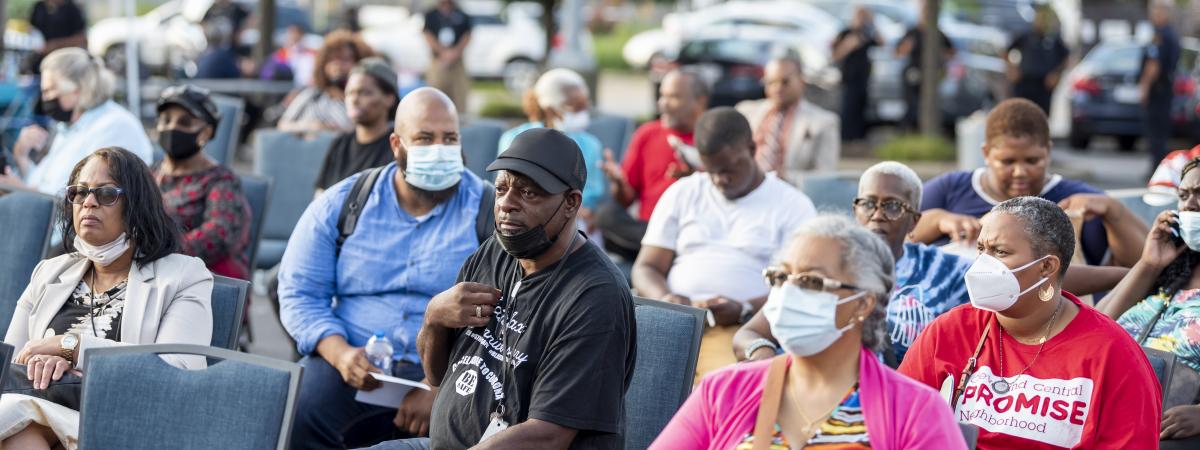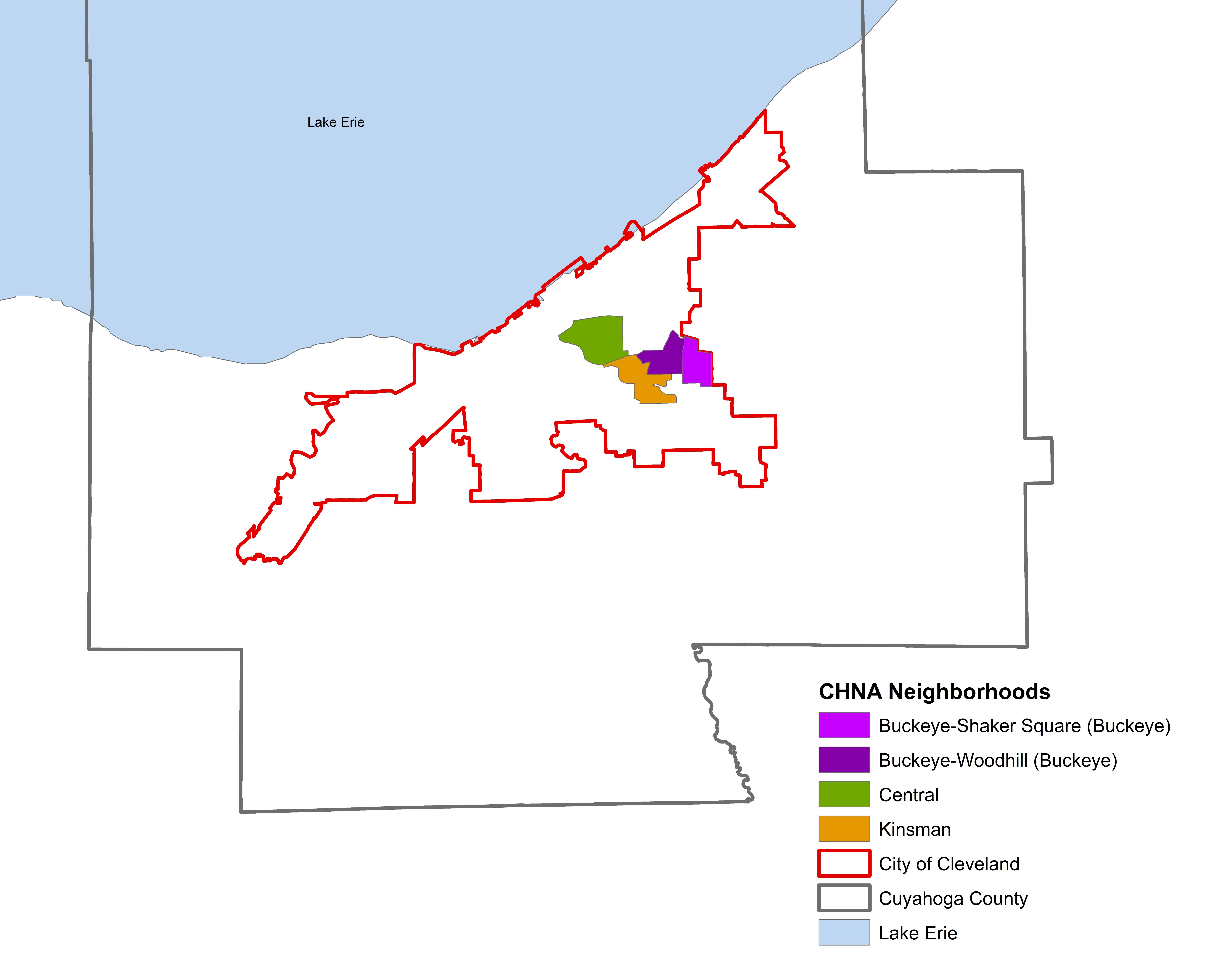The Neighborhood Community Health Needs Assessment (CHNA) was conducted in three Cleveland neighborhoods (Buckeye, Central, and Kinsman) in 2022, resulting in the sharing of findings in early 2023. The neighborhood-level CHNA for the Buckeye,
Central, and Kinsman neighborhoods was conducted by Burten, Bell, Carr Development, Inc. (BBC)
in collaboration with Old Brooklyn Community Development Corporation (OBCDC) and the Mary Ann
Swetland Center for Environmental Health at Case Western Reserve University. The CHNA was conducted to inform and secure support for future neighborhood and health-related program development, and policy initiatives that align with community needs
and desires for change.
Partners:
Burten, Bell, Carr Development, Inc. (BBC)
Old Brooklyn Community Development Corporation (OBCDC)
Mary Ann Swetland Center for Environmental Health at Case Western Reserve University
Buckeye, Central, and Kinsman are three of the 34 neighborhoods in Cleveland, Ohio, and Burten, Bell, and Carr Development, Inc. (BBC) primary service areas. Major thoroughfares in the approximately four-square-mile area include Cedar, Central, Quincy, and Woodland Avenues; Kinsman and Buckeye Roads; and E 55th Street.
- Buckeye Neighborhood combines the Buckeye-Shaker Square and Buckeye-Woodhill Statistical Planning Area. It settled many Hungarian immigrants that moved to Cleveland in the early 1900s.
As of 2019, Buckeye-Shaker Square had 11,680 residents (79% Black/African Americans) with a median household income of $30,448 and 5,984 residents (92% Black/African Americans) with a median household income of $18,185. - Central Neighborhood is one of the oldest neighborhoods in Cleveland, known for its early settlement of several ethnic groups, including Germans, Jews, Italians, African Americans, Czech, and Hungarian.
As of 2019, Central had over 11,000 residents (89% Black/African Americans) with a median household income of $10,440. - Kinsman Neighborhood is known for attracting heavy industries, such as oil refineries, steel mills producing machinery, and jobs in the 1800s. Early settlers were predominantly Jewish.
As of 2019, Kinsman had 5,877 residents (95% Black/African Americans) with a median household income of $18,046.
Five listening sessions with residents, community partners, and organizations informed the data collection methods. These sessions allowed us to identify six areas of concern, and the survey was designed to probe them in greater depth.
Surveys were completed by 1,402 residents (with the help of street team members) across all three neighborhoods. Responses were analyzed separately within each neighborhood and across all neighborhoods to generate the overall results and findings.
The results of this process are presented in three outputs:
- Community Health Snapshots: One-page data briefs highlight specific issues, opportunities, and health priorities for each of the Buckeye, Central, and Kinsman neighborhoods.
- Buckeye, Central, and Kinsman Neighborhood Level Community Health Needs Assessment Summary Report: Summarizes our process, findings, and recommendations based on participant feedback.
- Technical Report: A comprehensive list of survey questions and responses in aggregate and by neighborhood.
The Buckeye, Central, Kinsman Community Health Needs Assessment would not be possible without the generous support from:
- March - April 2022: Listening Sessions
- May - June 2022: Survey Development
- July - August 2022: Sampling
- August - October 2022: Data Collection
- November - December 2022: Data Analysis
- December - February 2023: Dissemination Planning
- March - July 2023: Activate Findings
For questions specific to the use of these findings within the target neighborhoods:
For data and evaluation questions:
- Owusua Yamoah, PhD, MA, Research Scientist Department of Population and Quantitative Health Sciences Mary Ann Swetland Center for Environmental Health School of Medicine: oxy14@case.edu.




